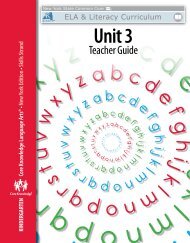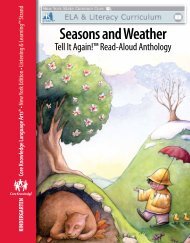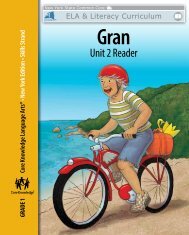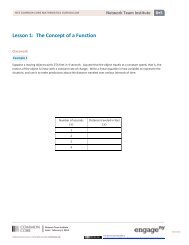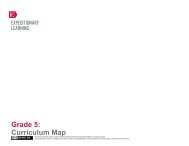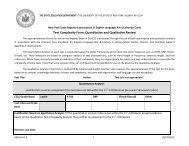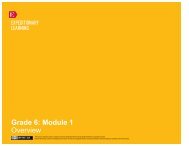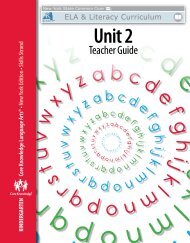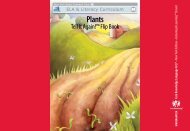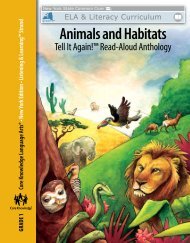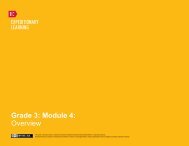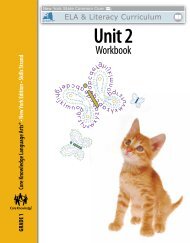Skills Unit 2 Teacher Guide - EngageNY
Skills Unit 2 Teacher Guide - EngageNY
Skills Unit 2 Teacher Guide - EngageNY
You also want an ePaper? Increase the reach of your titles
YUMPU automatically turns print PDFs into web optimized ePapers that Google loves.
In Grade 1, students will encounter other two-syllable words with various<br />
combinations of the magic ‘E’ syllable, vowel digraph syllable, the<br />
r-controlled vowel syllable, and the closed syllable.<br />
• Chunking these syllable types follows the same patterns for division<br />
as noted above for closed syllables:<br />
tar · get for · get es · cape ig · loo scoun · drel char · coal<br />
In Grade 2, students are introduced to more challenging multi-syllable<br />
words.<br />
Two-syllable words with only one consonant between the vowels are<br />
especially difficult to chunk because they may be divided either before or<br />
after the single consonant. Students are taught to use a flexible approach<br />
in chunking syllables with a single consonant between the vowels, trying<br />
each possibility when they encounter an unfamiliar word.<br />
• When only one consonant stands between two vowels, we suggest<br />
first dividing the word in front of the consonant and sounding it out as<br />
an open syllable:<br />
pu · pil vi · rus mo · ment<br />
unit<br />
u<br />
nit<br />
However, sometimes the word may divide after the consonant, creating<br />
a closed syllable. There is no definitive rule for when to divide before or<br />
after the consonant. Students will need to be flexible and try dividing<br />
and sounding the word each way—before and/or after the consonant—<br />
to determine whether they recognize a familiar word as they sound out<br />
each possibility. In order to recognize whether a word is familiar when<br />
sounded either way, the word must be one that the student has heard<br />
before, i.e., the word must be in the student’s oral vocabulary. Obviously,<br />
this will represent an additional challenge for students who have a limited<br />
vocabulary and/or for whom English is a second language.<br />
170 <strong>Unit</strong> 1 | Appendix B<br />
© 2013 Core Knowledge Foundation



